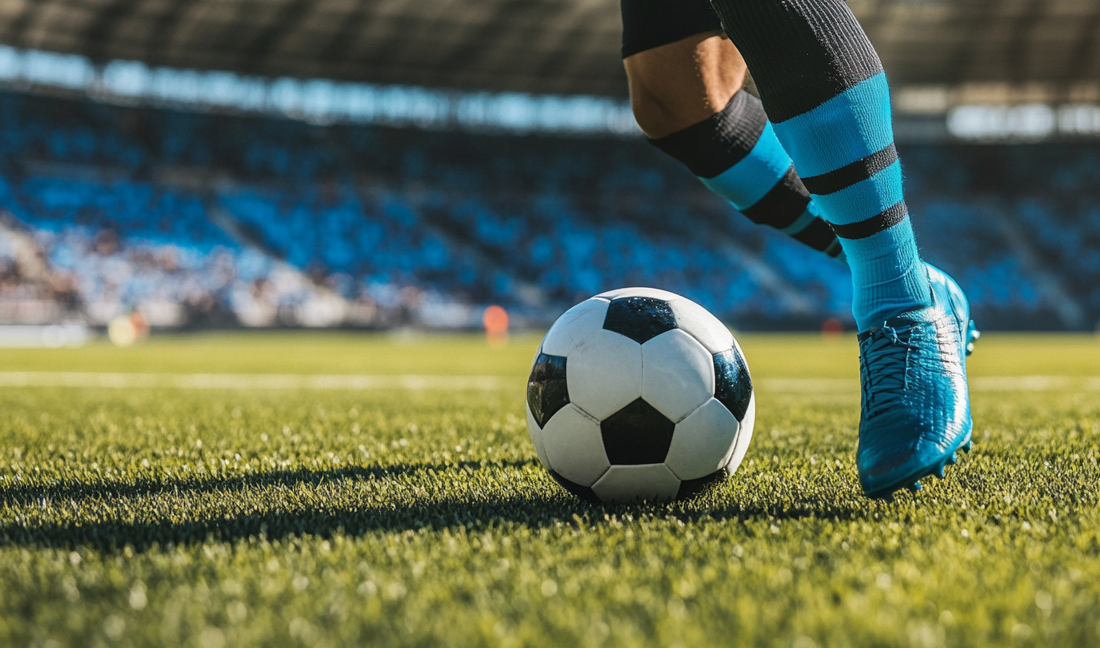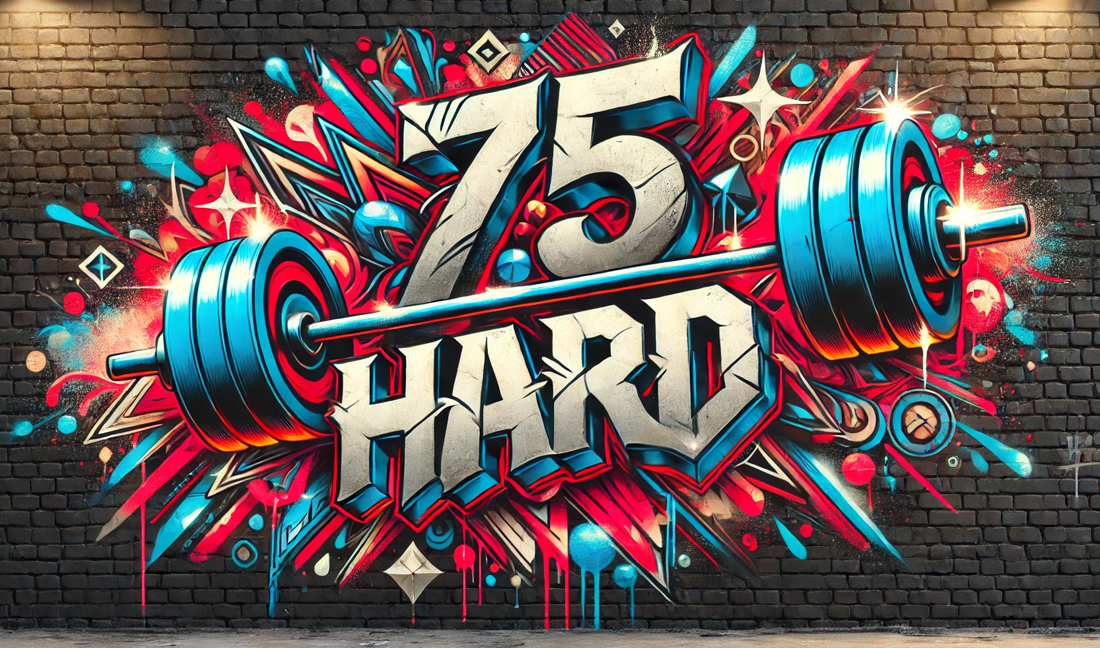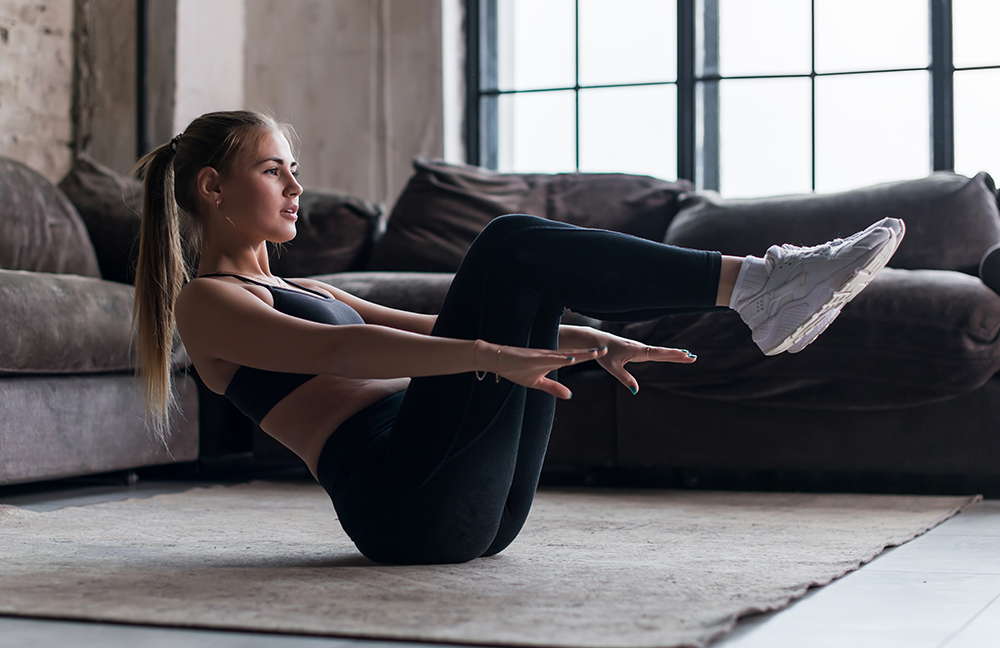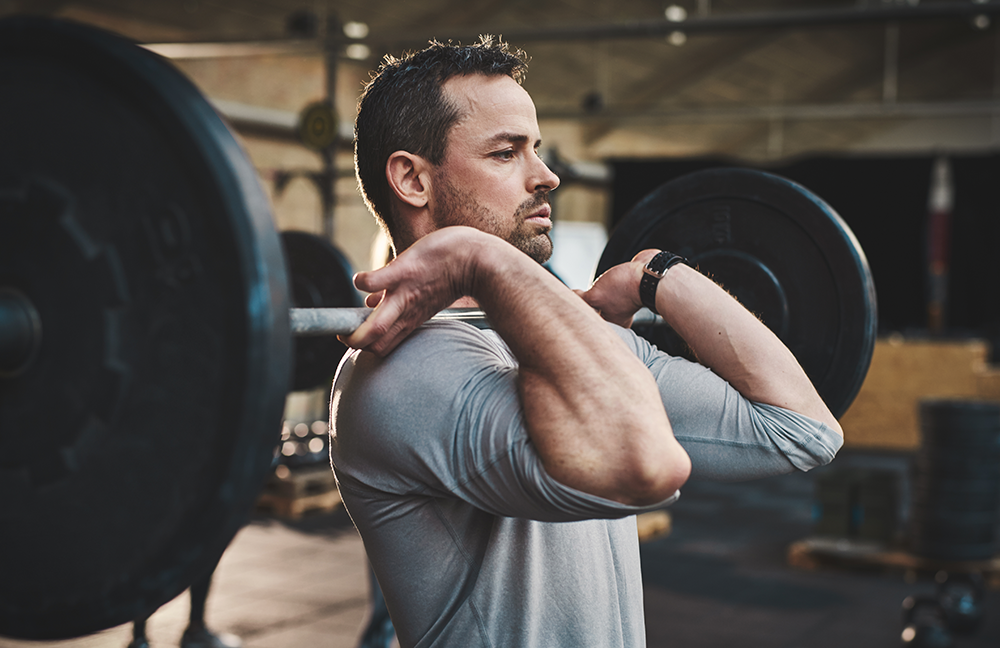Introduction
Soccer is a game of speed, agility, endurance, and power. While skill and technique are crucial, strength training is often the missing piece in many players’ development. Incorporating an Ultimate Soccer Strength Workout into your training routine can give you the edge needed to dominate on the field. Whether you’re sprinting past defenders, outmuscling opponents, or maintaining balance during quick direction changes, strength plays a key role in maximizing your performance.
Despite the misconception that weightlifting will make players bulky and slow, the right approach to strength training enhances explosiveness, prevents injuries, and improves overall endurance. A well-designed strength program doesn’t just build muscle—it makes you a more resilient and efficient athlete.
In this guide, we’ll break down why strength training is essential for soccer players, the key principles behind an effective soccer-focused lifting routine, and a structured workout plan that will help you get stronger, faster, and injury-free. Whether you’re an amateur player or an elite athlete, this Ultimate Soccer Strength Workout is your blueprint to taking your game to the next level.
1. Why Strength Training is Essential for Soccer Players
Soccer is a physically demanding sport that requires a unique combination of speed, endurance, agility, and strength. While many players focus primarily on conditioning and skill work, adding an Ultimate Soccer Strength Workout to your routine can drastically improve your performance on the field. Strength training helps soccer players build the power needed to sprint faster, the endurance to last a full 90-minute match, and the resilience to avoid injuries.
Let’s take a deeper look at the key reasons why strength training is a must for soccer players.
Improves Sprinting Power
Soccer involves short bursts of explosive speed – whether you’re chasing down a ball, cutting past a defender, or making a goal-scoring run. The stronger your legs are, the more force you can generate with each stride. Exercises like squats, deadlifts, and lunges develop the power in your quads, hamstrings, and glutes, allowing you to accelerate faster and maintain top speed longer.

Enhances Agility and Balance
Quick cuts, sharp turns, and sudden changes in direction are all crucial movements in soccer. A strong lower body combined with core strength helps players stay balanced and controlled when making these rapid movements. Strengthening stabilizing muscles with single-leg exercises, planks, and rotational core exercises will improve your ability to stay on your feet even under pressure.
Prevents Injuries
One of the biggest benefits of strength training is its ability to reduce injury risk. Soccer players are prone to muscle imbalances, particularly in the hamstrings and quads, which can lead to strains and ligament injuries. A well-balanced strength program strengthens tendons, ligaments, and joints, making them more resistant to the high-impact nature of the game. Exercises like Romanian deadlifts and Nordic hamstring curls specifically target injury-prone areas and improve durability.
Boosts Stamina and Endurance
Strength training isn’t just about building power – it also improves muscular endurance, which is crucial for lasting through an entire match without fatigue. Stronger muscles require less energy to perform movements, meaning you can sprint, dribble, and defend for longer without tiring out. Circuit-based resistance training, combined with traditional strength work, helps condition the muscles for both explosive power and sustained effort.
Builds Upper Body Strength for Shielding and Physical Play
While soccer is primarily a lower-body sport, upper-body strength is equally important. Shielding the ball, holding off defenders, and winning aerial duels all require a strong upper body. Strength training for soccer players should include pull-ups, push presses, and dumbbell rows to develop the necessary upper-body strength without adding unnecessary bulk.
Key Takeaway
A soccer player’s strength training routine should be focused on building power, endurance, agility, and injury prevention rather than sheer muscle mass. By incorporating the right exercises into your Ultimate Soccer Strength Workout, you’ll not only improve your physical capabilities but also gain a competitive advantage on the field.
2. Key Principles of Strength Training for Soccer Players
Strength training for soccer isn’t about lifting the heaviest weights or bulking up like a bodybuilder. Instead, an Ultimate Soccer Strength Workout is designed to enhance functional strength, explosive power, and endurance—all while maintaining agility and flexibility. To make the most of your strength program, you need to follow key training principles that cater specifically to the demands of the sport.
Focus on Explosiveness, Not Bulk
Soccer players rely on fast-twitch muscle fibers for explosive movements like sprinting, jumping, and changing direction. Strength training should emphasize power rather than muscle size. Instead of slow, heavy lifts, focus on:
- Olympic lifts (e.g., Power Cleans, Hang Cleans)
- Plyometrics (e.g., Box Jumps, Broad Jumps)
- Speed-based compound lifts (e.g., Squats with explosive drive, Deadlifts with speed focus)
These exercises train your muscles to generate force quickly, leading to faster acceleration and better agility on the field.
Lower Body Strength is the Foundation
The legs are a soccer player’s most valuable asset. A strong lower body helps with sprinting, balance, and injury prevention. Your Ultimate Soccer Strength Workout should prioritize exercises that target:
- Quads & Glutes: Squats, Lunges, Bulgarian Split Squats
- Hamstrings: Romanian Deadlifts, Nordic Hamstring Curls
- Calves & Ankles: Calf Raises, Single-Leg Hops
A well-developed lower body ensures stronger kicks, explosive sprints, and better stability when tackling or shielding the ball.
Core Stability for Balance and Control
A strong core helps players maintain stability during high-speed movements, absorb contact from defenders, and execute powerful shots. Soccer players should focus on anti-rotational and stability-based core exercises such as:
- Pallof Presses – Builds core stability for resisting tackles.
- Plank Variations – Improves overall midsection endurance.
- Hanging Leg Raises – Strengthens the lower abs and hip flexors for explosive sprinting and kicking power.
A solid core prevents injuries and improves movement efficiency, making every action on the field smoother and more controlled.
Incorporate Unilateral Movements
Soccer is a sport that requires constant weight shifts and single-leg movements – think of kicking, sprinting, or jumping off one foot. To prepare for these demands, include single-leg exercises in your training:

- Bulgarian Split Squats – Enhances balance and unilateral leg strength.
- Step-Ups – Mimics natural movement patterns used in sprinting.
- Single-Leg Romanian Deadlifts – Strengthens hamstrings and stabilizing muscles.
These exercises improve coordination, balance, and injury prevention, all of which are crucial for soccer players.
Prioritize Mobility and Flexibility
Unlike some strength sports, soccer requires a full range of motion in the hips, knees, and ankles. A lack of mobility can lead to reduced performance and increased risk of injury. To maintain flexibility:
- Perform dynamic stretching before workouts (e.g., leg swings, hip openers).
- Foam roll tight areas regularly to improve blood flow and muscle recovery.
- Incorporate yoga or active recovery days to keep joints flexible.
Flexibility ensures that your strength gains don’t come at the cost of agility and quickness.
Train Upper Body for Strength Without Bulk
Upper-body strength is often overlooked in soccer, but it plays a role in shielding the ball, winning aerial duels, and maintaining balance during physical challenges. The goal is to be strong without becoming overly bulky. Include:
- Pull-Ups – Builds back and arm strength for defending and controlling the ball.
- Push Presses – Develops explosive upper-body power for long passes and shooting.
- Dumbbell Rows – Strengthens shoulders and back for better posture and endurance.
A well-balanced upper-body routine ensures you can hold your ground against physical defenders while staying quick and agile.
Use Progressive Overload to Improve Strength Over Time
Strength gains don’t happen overnight. To continually improve, you need progressive overload – gradually increasing weight, reps, or intensity. To apply this:
- Increase weights by 5-10% when exercises start to feel easier.
- Focus on quality reps over maximum weight.
- Track your progress to ensure consistent improvements. Find core metrics in this article.
Progressive overload ensures that you keep getting stronger while avoiding plateaus.
Combine Strength Training with On-Field Work
Lifting weights alone won’t make you a better soccer player – your soccer strength workout should be combined with soccer drills. After a strength session, incorporate:
- Agility ladder drills for foot speed.
- Ball control exercises to maintain touch under fatigue.
- Sprinting drills to maximize speed development.
This combination ensures that your strength improvements translate directly into better game performance.
Key Takeaway
The best soccer strength workout is one that builds functional strength, enhances explosiveness, and prevents injuries, all while keeping you agile and quick on the field. By following these principles, you’ll develop the physical foundation needed to dominate every aspect of the game.
3. The Ultimate Soccer Strength Workout Plan
Now that you understand the key principles behind effective soccer strength training, it’s time to put them into action. This Ultimate Soccer Strength Workout is designed to enhance explosiveness, endurance, and injury prevention while keeping you agile and quick on the field.
This structured weekly plan balances lower-body power, upper-body strength, core stability, and explosive movements, ensuring that you develop functional strength that translates directly to game performance.
Weekly Strength Training Schedule
- Day 1 Lower Body Power & Acceleration
- Day 2 Upper Body Strength & Core Stability
- Day 3 Active Recovery & Mobility
- Day 4 Explosiveness & Speed Development
- Day 5 Full-Body Strength & Conditioning
- Day 6 Optional Agility & Conditioning
- Day 7 Rest or Light Recovery
⚽ Day 1: Lower Body Power & Acceleration
Develops explosive strength and sprint speed while strengthening the legs for injury prevention.
| Exercise | Sets / Reps | Why |
|---|---|---|
Back Squats | 4 sets of 6-8 reps. | Focus on power during the upward movement |
Romanian Deadlifts | 3 sets of 8 reps. | Strengthens hamstrings and reduces injury risk. |
Bulgarian Split Squats | 3 sets of 10 reps per leg. | Enhances single-leg strength for sprinting and kicking. |
Calf Raises | 4 sets of 10 reps. | Improves ankle strength and stability. |
Box Jumps | 4 sets of 10 reps. | Develops explosiveness for acceleration. |
| Sled Pushes (or Weighted Sprints) | 3 rounds of 15 meters. | Mimics game-speed sprinting with resistance. |
⚽ Day 2: Upper Body Strength & Core Stability
Upper-body strength is essential for shielding the ball, winning aerial duels, and maintaining balance. Core stability helps maintain control during quick movements.
| Exercise | Sets / Reps | Why |
|---|---|---|
Pull-Ups or Lat Pulldowns | 3 sets of 8-10 reps. | Builds upper-body strength for shielding defenders. |
Dumbbell Bench Press | 3 sets of 10 reps. | Develops power for long passes and aerial battles. |
Overhead Dumbbell Press | 3 sets of 10 reps. | Enhances shoulder stability and strength. |
Russian Twists | 3 sets of 20 twists. | Improves rotational core strength for shooting and passing. |
Hanging Leg Raises | 4 sets of 12 reps. | Strengthens the lower abs and hip flexors for sprinting. |
Plank Variations (Side Plank & Pallof Presses) | 3 sets of 30-45 seconds. | Develops core endurance for balance and control. |
⚽ Day 3: Active Recovery & Mobility
Recovery is just as important as training. This day helps prevent injuries and improves flexibility.
- Dynamic Stretching Routine (10-15 minutes) (Hip openers, arm swings, leg swings.)
- Foam Rolling & Myofascial Release (20 minutes) (Targets tight muscles and improves blood circulation.)
- Yoga Flow or Light Bodyweight Circuit (Enhances mobility and resets the nervous system.)
- Optional: 20-Minute Light Jog (Active recovery to maintain endurance.)
⚽ Day 4: Explosiveness & Speed Development
This session focuses on quick bursts of acceleration and explosive power for rapid direction changes and sprinting.
| Exercise | Sets / Reps | Why |
|---|---|---|
Power Cleans | 3 sets of 6 reps. | Develops total-body explosiveness. |
Lunges with Pass-Through | 3 sets of 10 reps per leg. | Improves dynamic balance. |
Medicine Ball Slams | 3 sets of 12 reps. | Enhances explosive power in passing and shooting. |
| Sprint Intervals (10m, 20m, 30m sprints) | 5 rounds. | Mimics game-specific sprinting needs. |
| Agility Ladder Drills | 10 minutes. | Boosts foot speed and coordination. |
| Broad Jumps | 4 sets of 10 reps. | Improves horizontal explosiveness for tackling and lunging. |
⚽ Day 5: Full-Body Strength & Conditioning
This session combines upper and lower-body strength, agility, and endurance.
| Exercise | Sets / Reps | Why |
|---|---|---|
Deadlifts | 3 sets of 8 reps. | Improves strength for explosive movements. |
Push Press | 3 sets of 8 reps. | Enhances upper-body power and coordination. |
Plank Variations | 3 sets of 30-45 seconds. | Develops core endurance. |
Jump Rope Intervals | 5 rounds of 2 minutes. | Increases foot speed and endurance. |
| Agility Cone Drills | 10 minutes. | Improves cutting ability and reaction time. |
Sled Pushes or Weighted Carries | 3 rounds. | Mimics game-specific physicality. |
⚽ Day 6: Optional Agility & Conditioning
This session focuses on footwork, reaction time, and conditioning for match endurance.
- Jump Rope Speed Training – 5 rounds of 1-minute max effort (Improves coordination and stamina.)
- T-Drill Sprint Drill – 5 sets (Boosts agility and lateral quickness.)
- Short-Sprint Ladder (30m, 40m, 50m sprints) – 4 rounds (Builds match endurance.)
- Agility Ladder Drills – 10 minutes (Enhances acceleration and change of direction.)
- Core Burnout (Planks, Hanging Leg Raises, Side Planks) – 3 sets (Improves midsection control and balance.)
⚽ Day 7: Rest or Light Recovery
Your body needs time to rebuild and repair muscles for maximum performance.
- Gentle stretching or yoga (Increases flexibility and relaxation.)
- Foam rolling session (Reduces soreness and aids muscle recovery.)
- Optional: Light jog or casual soccer drills (Keep blood flowing without strain.)
Key Takeaways from This Soccer Strength Plan
- Develops explosive leg strength for faster sprints and higher jumps.
- Enhances agility and balance for better movement control.
- Strengthens the core for stability in passing, shooting, and defending.
- Boosts endurance and conditioning to maintain performance throughout the match.
- Reduces injury risk by strengthening stabilizing muscles and tendons.
This workout is your blueprint for dominating the field with strength, power, and speed. For many more great workout ideas, check out our Blaze database:
4. Tips for Maximizing Your Ultimate Soccer Strength Workout
Following a structured workout is crucial for improving performance, but how you train is just as important as what you train. To get the most out of your strength program, you need to ensure you’re training efficiently, recovering properly, and integrating your strength gains into actual game performance.
Prioritize Proper Form Over Heavy Weights
Lifting heavier weights might seem like the fastest way to get stronger, but poor form can lead to injuries and ineffective training.
- Master proper technique first: focus on slow, controlled movements before adding more weight.
- Use full range of motion: avoid cutting reps short; this maximizes muscle activation.
- Seek feedback: record yourself or work with a trainer to refine your form.
By lifting with proper mechanics, you develop strength that actually translates into better performance on the field.
Train for Explosiveness, Not Just Strength
Soccer is a game of speed, agility, and quick movements. Training for raw strength without explosive exercises won’t give you the power you need for sprints, shots, and quick direction changes.
- Use plyometrics like box jumps, sprint drills, and medicine ball throws.
- Perform Olympic lifts such as power cleans and snatches for dynamic power.
- Lift with speed in mind—move the bar quickly during exercises like squats and deadlifts.
These adjustments help convert your strength into game-ready power.
Don’t Neglect Core Training
Your core is the foundation of balance, control, and movement efficiency in soccer. A weak core can limit your strength potential and increase injury risk.
- Prioritize functional core exercises like planks, Pallof presses, and hanging leg raises.
- Include rotational exercises like Russian twists and medicine ball throws to mimic real game movements.
- Engage your core during all lifts – keep it tight during squats, deadlifts, and presses.
A strong core helps with shooting power, ball control, and staying stable in tackles.
Balance Strength Training with Skill Work
Getting stronger is great, but if your ball control, dribbling, and passing suffer because you’re spending all your time lifting, your game won’t improve.
- Follow up strength sessions with skill work like shooting drills and dribbling exercises.
- Don’t lift too close to match day – avoid heavy leg training 24-48 hours before a game to stay fresh.
- Use light resistance exercises on rest days to maintain mobility and coordination.
Your strength training should complement your soccer performance, not replace skill development.
Avoid Overtraining: Recovery is Just as Important as Training
Strength gains happen when your muscles recover, not while you’re lifting. If you’re always sore or fatigued, you’re not getting the most out of your training.
- Prioritize sleep: aim for 7-9 hours of quality rest per night.
- Eat enough protein and carbs: fuel your body for recovery and muscle repair.
- Stretch, foam roll, and stay hydrated to reduce soreness and improve mobility.
A well-rested body is stronger, faster, and more resilient to injuries.
Track Your Progress and Adjust Your Training
You can’t improve what you don’t measure. Keeping track of your strength levels, speed, and endurance will help you adjust your program over time.
- Log your workouts: track reps, weights, and any performance improvements.
- Set realistic goals: whether it’s increasing squat strength or improving sprint speed, define your objectives.
- Adjust intensity: if a workout feels too easy, increase weight, reps, or speed of execution.
By monitoring progress, you ensure continuous improvement and avoid hitting plateaus:
Workout Tracking
With Blaze Workout, you have access to a huge variety of metrics. This allows you to review your progress over time under different angles.
Take your workout to the next level!
Maintain Mobility & Flexibility
Many soccer players make the mistake of getting stronger but losing flexibility, which can reduce their ability to move efficiently on the field.
- Stretch dynamically before workouts to improve mobility.
- Incorporate yoga or active stretching into your routine to stay flexible.
- Use foam rolling or massage therapy to release tight muscles and prevent stiffness.
Maintaining mobility keeps you agile, fluid, and injury-free.
Train for Single-Leg Strength & Stability
Most soccer movements – shooting, sprinting, dribbling – happen on one leg at a time. Training both legs together isn’t enough to maximize stability and power.
- Prioritize unilateral exercises like Bulgarian split squats, step-ups, and single-leg Romanian deadlifts.
- Train balance drills like single-leg hops and stability ball exercises.
- Strengthen ankle stability with calf raises and banded ankle mobility work.
This approach reduces injury risk and improves overall movement efficiency on the field.
Don’t Skip Upper-Body Strength Training
Many soccer players think they only need to train their legs, but upper-body strength is crucial for shielding the ball, fending off defenders, and maintaining balance.
- Perform pull-ups, push presses, and rows to develop upper-body power.
- Include bodyweight movements like dips and push-ups for functional strength.
- Avoid excessive mass gain – stick to moderate reps (6-10) with controlled form to stay lean and athletic.
A strong upper body gives you confidence in physical matchups without slowing you down.
Stay Consistent and Trust the Process
The best soccer strength workout will only work if you stick with it. Strength gains take time, but consistency leads to real results.
- Stick to the plan: train 3-5 times per week for progressive gains.
- Be patient: expect small improvements each week, rather than overnight transformations.
- Stay motivated: remind yourself why you’re training and the benefits it brings to your game.
By staying committed, you’ll see improvements in strength, speed, endurance, and confidence on the field.

5. Common Mistakes to Avoid in Soccer Strength Training
Even the best strength workout can fail to deliver results if key mistakes are made. Many soccer players unknowingly train in ways that don’t fully support their performance, leading to plateaus, injuries, and wasted effort. Avoid these common pitfalls to ensure that your strength training helps you dominate on the field.
Training Like a Bodybuilder Instead of an Athlete
✅ The Mistake: Focusing too much on traditional bodybuilding workouts with isolated muscle exercises (e.g., bicep curls, leg extensions) instead of functional strength.
🚫 Why It’s a Problem: Soccer is a dynamic sport that requires explosiveness, speed, and endurance, not just muscle size. Bulking up too much can slow you down and decrease agility.
✔ The Fix: Prioritize compound movements, explosive lifts, and plyometrics to build strength without unnecessary bulk. Exercises like squats, deadlifts, and power cleans are much more beneficial for soccer players than excessive arm or chest workouts.
Neglecting Lower Body Strength
✅ The Mistake: Overemphasizing upper-body training while skipping essential leg workouts.
🚫 Why It’s a Problem: Your legs generate power for sprinting, jumping, and kicking. Weak legs lead to slower acceleration, lower endurance, and a higher risk of injury.
✔ The Fix: Make squats, lunges, Romanian deadlifts, and calf raises the foundation of your strength program. These exercises strengthen the muscles responsible for explosive movements on the field.
Ignoring Core Strength and Stability
✅ The Mistake: Thinking core training is just about getting abs and doing crunches.
🚫 Why It’s a Problem: A weak core results in poor balance, reduced agility, and weaker shots and passes. Your core stabilizes your body in motion and helps absorb contact from defenders.
✔ The Fix: Train your core with functional exercises like planks, Pallof presses, hanging leg raises, and rotational movements (e.g., Russian twists, medicine ball throws).
Skipping Explosive and Speed-Based Training
✅ The Mistake: Lifting heavy weights without incorporating plyometrics and speed drills.
🚫 Why It’s a Problem: Soccer requires quick bursts of acceleration, sudden direction changes, and rapid reaction times. Strength without speed is useless in a fast-paced game.
✔ The Fix: Include plyometric exercises like box jumps, bounding sprints, and medicine ball slams. Perform lifts with explosiveness rather than slow, heavy reps.
Overtraining and Not Allowing Enough Recovery
✅ The Mistake: Training too frequently without proper rest and recovery.
🚫 Why It’s a Problem: Overtraining leads to fatigue, poor performance, increased injury risk, and burnout. Soccer is a high-impact sport, and recovery is essential for progress.
✔ The Fix: Take at least one full rest day per week. Space out intense leg days to prevent overuse injuries. Sleep 7-9 hours per night to maximize recovery.
Avoiding Unilateral (Single-Leg) Training
✅ The Mistake: Only training with two-legged movements like barbell squats and ignoring single-leg exercises.
🚫 Why It’s a Problem: Soccer is a sport of single-leg movements—whether you’re sprinting, kicking, or changing direction. If you don’t train each leg independently, you’re missing out on key strength adaptations.
✔ The Fix: Include Bulgarian split squats, single-leg deadlifts, and step-ups to strengthen each leg individually, improving balance and injury resistance.
Not Incorporating Agility and Footwork Drills
✅ The Mistake: Treating strength training as a separate entity instead of integrating it with soccer skills.
🚫 Why It’s a Problem: Getting stronger won’t automatically make you faster, more agile, or better at ball control unless you also train these skills.
✔ The Fix: After strength workouts, add agility ladder drills, cone drills, or ball control exercises. On lighter training days, work on short sprints and lateral movement drills to translate your strength into better movement on the field.
Lifting Too Close to Match Day
✅ The Mistake: Performing heavy leg lifts right before a game.
🚫 Why It’s a Problem: Strength training fatigues your muscles, reducing sprint speed, agility, and endurance during a match.
✔ The Fix: Avoid heavy lower-body lifts 24-48 hours before a game. Focus on mobility work and light activation exercises (like bodyweight squats or banded glute bridges) on game day.
Training Without Progressive Overload
✅ The Mistake: Using the same weights and rep ranges without increasing intensity over time.
🚫 Why It’s a Problem: Your muscles adapt quickly, and if you don’t challenge them, your strength will plateau.
✔ The Fix: Apply progressive overload by: Increasing weights gradually (5-10% every few weeks). Adding reps when exercises feel too easy. Reducing rest times between sets for added intensity.
Neglecting Nutrition and Hydration
✅ The Mistake: Training hard but not fueling your body properly.
🚫 Why It’s a Problem: Without proper nutrition, your body won’t recover, build muscle, or perform at its best.
✔ The Fix: Eat protein-rich meals (chicken, fish, eggs, beans) for muscle repair. Stay hydrated – even slight dehydration impacts endurance and recovery. Consume carbohydrates before workouts for energy and after workouts for glycogen replenishment.
Conclusion: Elevate Your Game with the Ultimate Soccer Strength Workout
Strength training is a game-changer for soccer players looking to enhance their performance, build explosive power, and stay injury-free. A well-structured Ultimate Soccer Strength Workout doesn’t just make you stronger – it makes you faster, more agile, and more resilient on the field.
By following the principles of functional strength, progressive overload, and explosive movement, you’ll develop the key physical attributes that separate elite players from the rest. Whether you’re accelerating past defenders, winning tackles, or holding your ground against physical opponents, strength training will give you the edge needed to dominate.
Recap of Your Strength Training Blueprint
- Train for Power, Not Bulk – Focus on speed-based strength training, not bodybuilding.
- Prioritize Lower Body Strength – Strong legs mean faster sprints and more powerful shots.
- Strengthen Your Core – A solid core improves balance, ball control, and injury resistance.
- Use Plyometrics for Explosiveness – Box jumps, cleans, and agility drills enhance quickness.
- Avoid Overtraining – Recovery and proper nutrition are essential for consistent progress.
- Balance Strength with Skill Work – Combine lifting with soccer-specific drills for the best results.
It’s Time to Take Action
Now that you have a complete roadmap for soccer-specific strength training, it’s up to you to put in the work. Strength isn’t built overnight – but with consistent effort and smart training, you’ll start seeing improvements in your speed, endurance, and power.
🚀 Start today, track your progress, and stay committed to your development.
🔥 Your hard work in the gym will translate to better performance on the field.
⚽ The stronger you become, the greater impact you’ll have in every match.
Last but not least, we suggest you download our AI-powered free iOS fitness app for workout planning and tracking:













